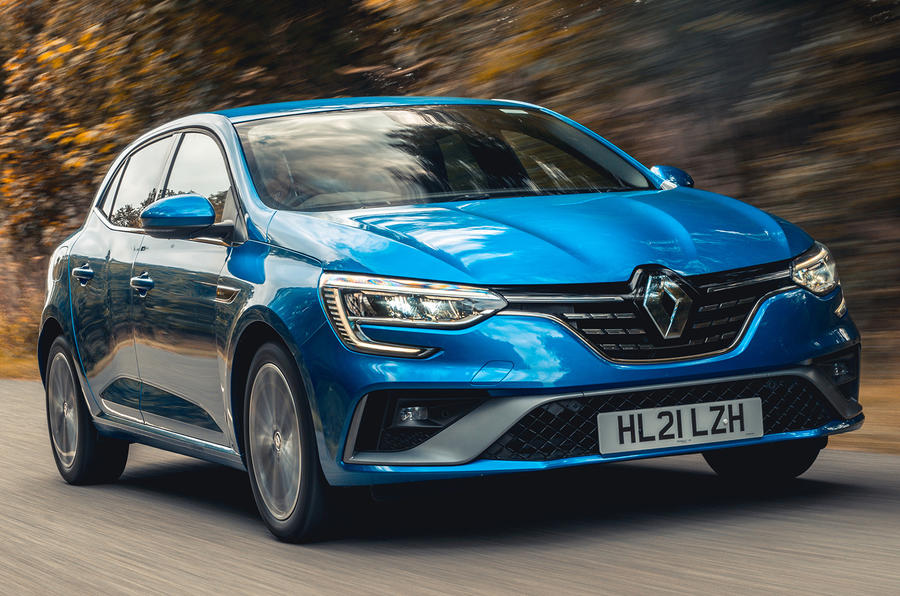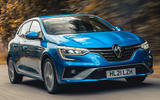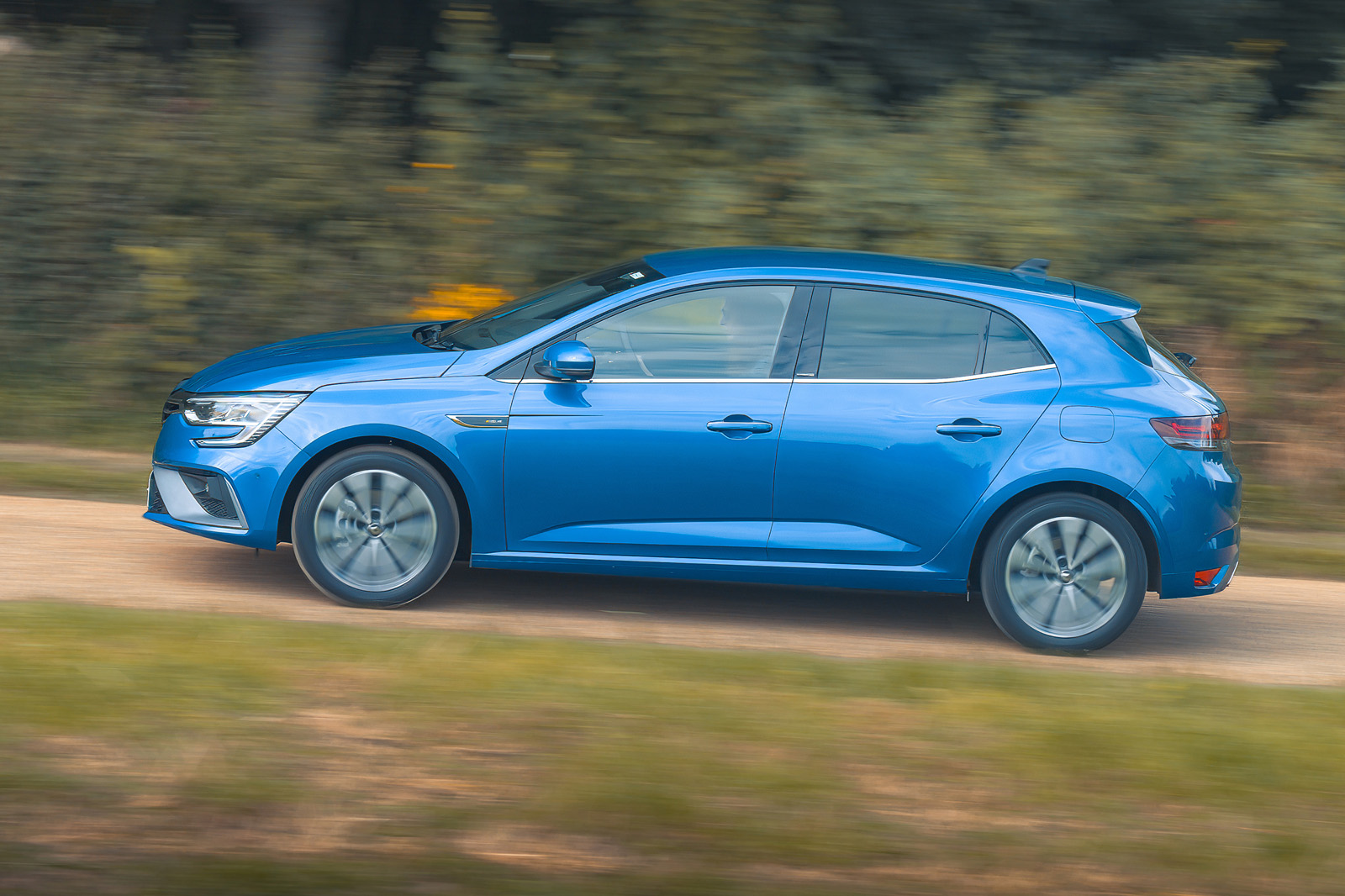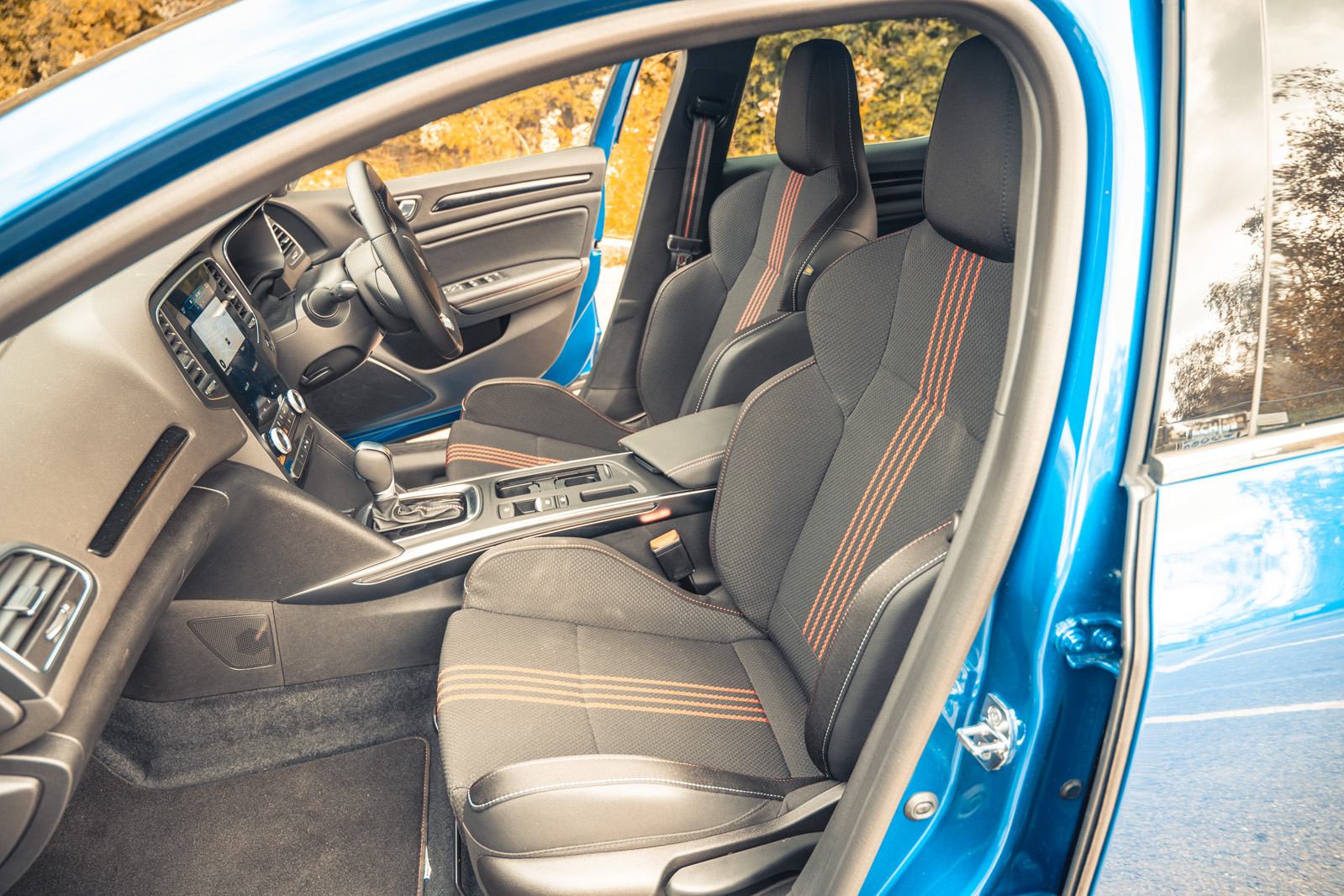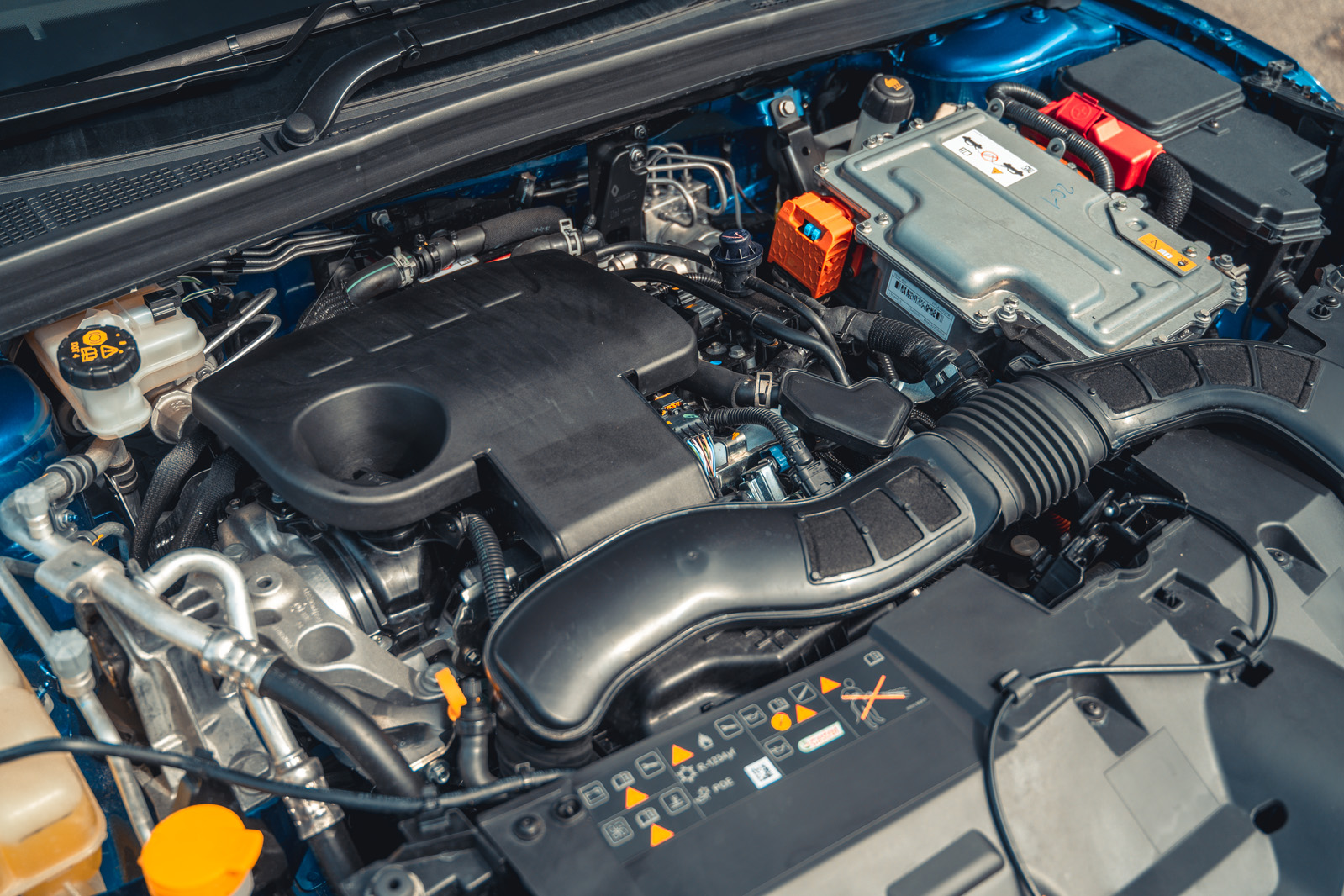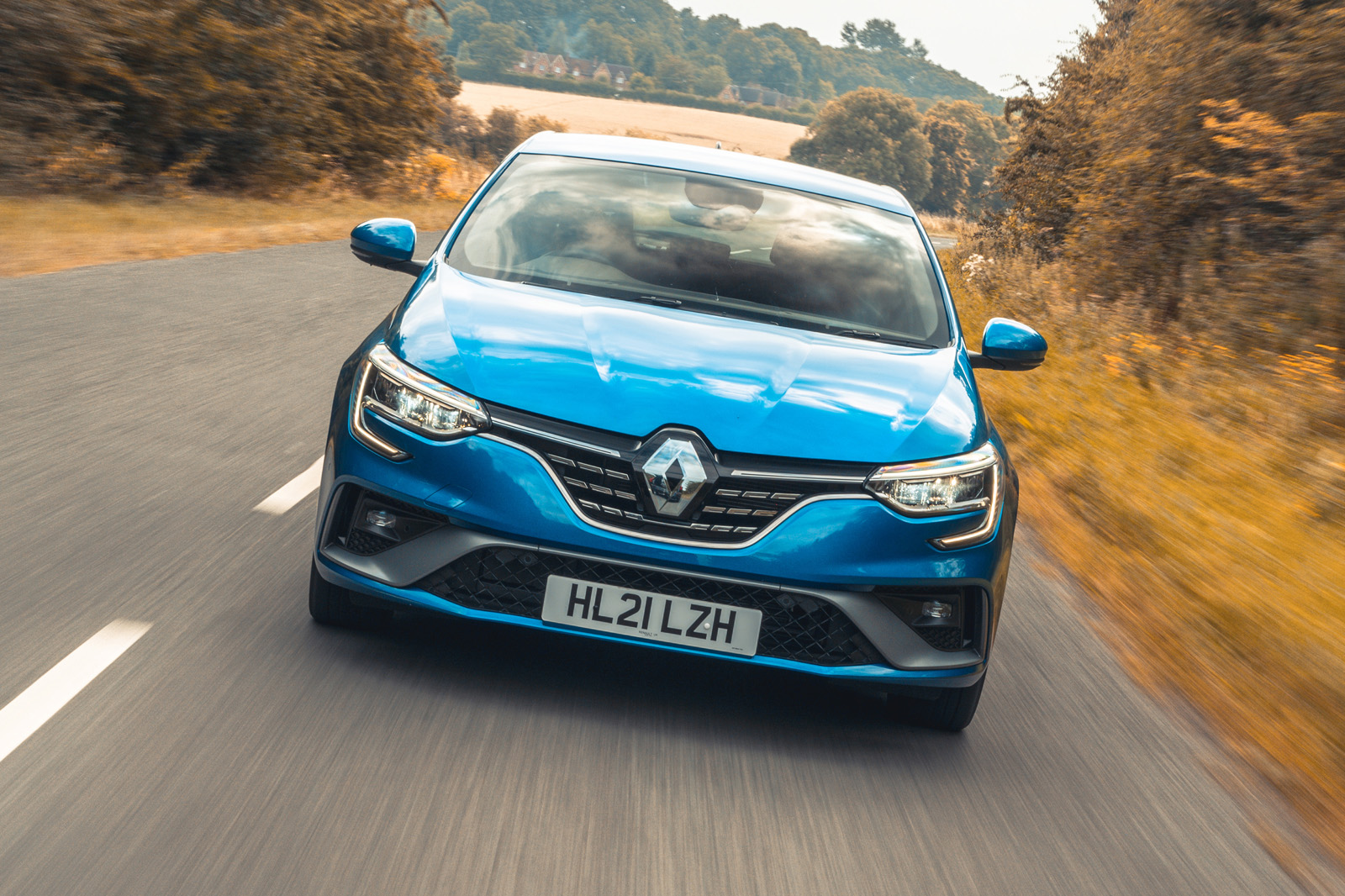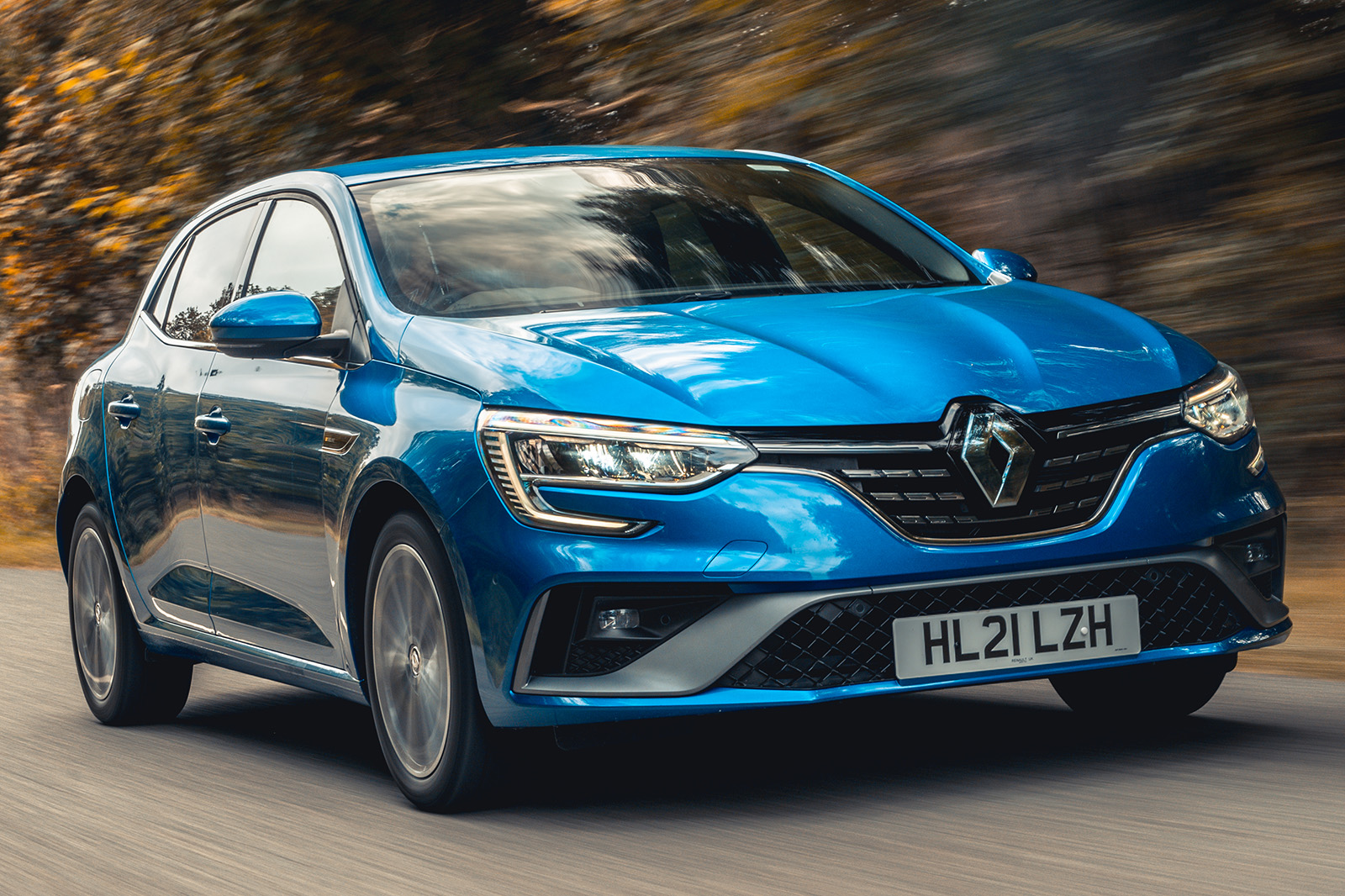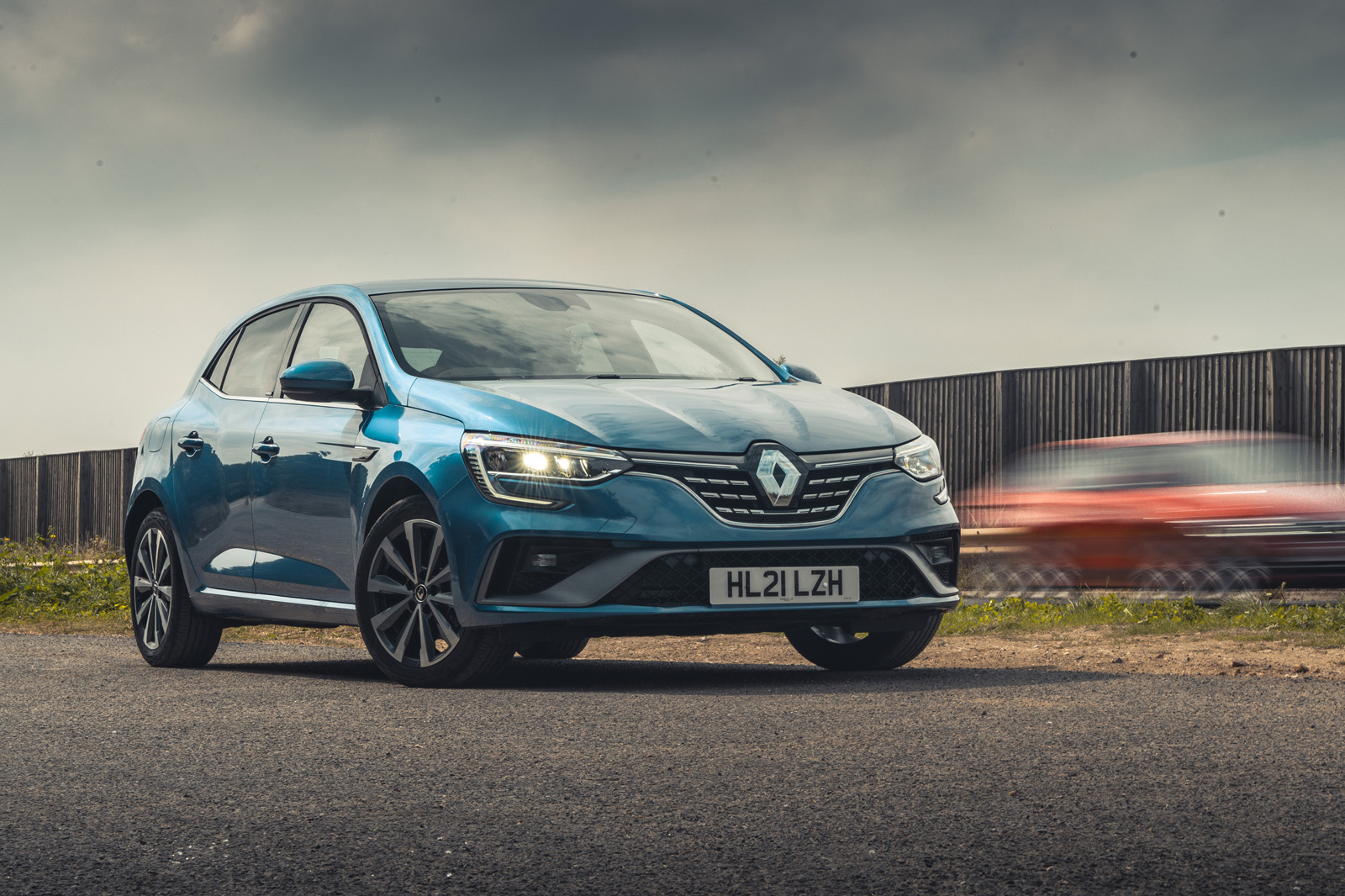With its updated infotainment system and brand-new hybrid powertrain, where the Mégane most shows its age is in the interior. It wasn’t a class leader when we first tested it in 2016, meriting just three stars, and while updates have prevented it from slipping down too much further since, they can only do so much.
For instance, a facelift can’t do anything at all about the car’s packaging, and the fact that the Mégane simply doesn’t make enough of the space within its wheelbase available to passengers. Despite being the same size as most hatchback rivals, it doesn’t feel as roomy inside, with downright poor rear leg room for adults. That’s made disproportionately worse with a tall driver, with the front footwells being oddly shallow on the side of the accelerator pedal, and so pushing both pedals and driver back inside the wheelbase, causing something of an awkward driving position for taller people in particular.
The boot is a little larger than its direct hybrid rivals, at 292 litres, though that is still down on regular hatchbacks since the battery robs some space. It also suffers from a fairly high load lip, and the rear seats will not quite fold flat. There is an additional 16-litre compartment under the boot floor for cable storage, but that is the only underfloor space available. If you do need more room, Renault does offer a Sport Tourer estate.
With more recent models such as the Renault Captur and Renault Clio, Renault has shown evidence of higher standards for perceived quality, but the Mégane looks a tad drab, with big slabs of rubberised dashboard broken up only by a sliver of unconvincing ‘carbonfibre’. The mood lighting is a neat touch; the matt surfaces in the centre console feel solid enough; and the important touchpoints are covered in leather, but the lower dashboard is still made of coarse plastics. Interior storage includes a decent-size centre armrest, two cupholders and a tray for your phone (but no wireless charging).
One benefit of the car’s antiquated dashboard design is that there are plenty of buttons: for the climate control, heated seats if fitted, lane departure warning and EV driving mode. Just a physical volume control is missing, though the driver does get the traditional Renault media controls behind the steering wheel. They’re easy to mock, as they wouldn’t look out of place on a 1997 Laguna – but, with practice, they soon become remarkably user-friendly.
Infotainment and sat-nav
Renault has never quite managed to lead the market when it comes to infotainment technology, but the current iteration of its touchscreen set-up, called Easy Link, uses a 9.3in screen (or 7.0in on lower trims) and represents a massive improvement over the R-Link system in the pre-facelift Mégane.
The screen is big and clear and responds quickly enough; not quite like a smartphone, but better than some Volkswagen Group systems. The built-in navigation is powered by Google, so its directions are generally sensible and alternative routes are easy to choose, but the way it displays public chargers is confusing.
The problem is that there are no shortcut buttons other than a home button, so switching between the driving mode selection screen, the in-built navigation and media through Apple CarPlay or Android Auto takes quite a few taps. And that’s an issue, because with the portrait-oriented screen and no place to rest a hand, you sometimes need multiple stabs to hit the right button.


